Tag: prehistoric
-
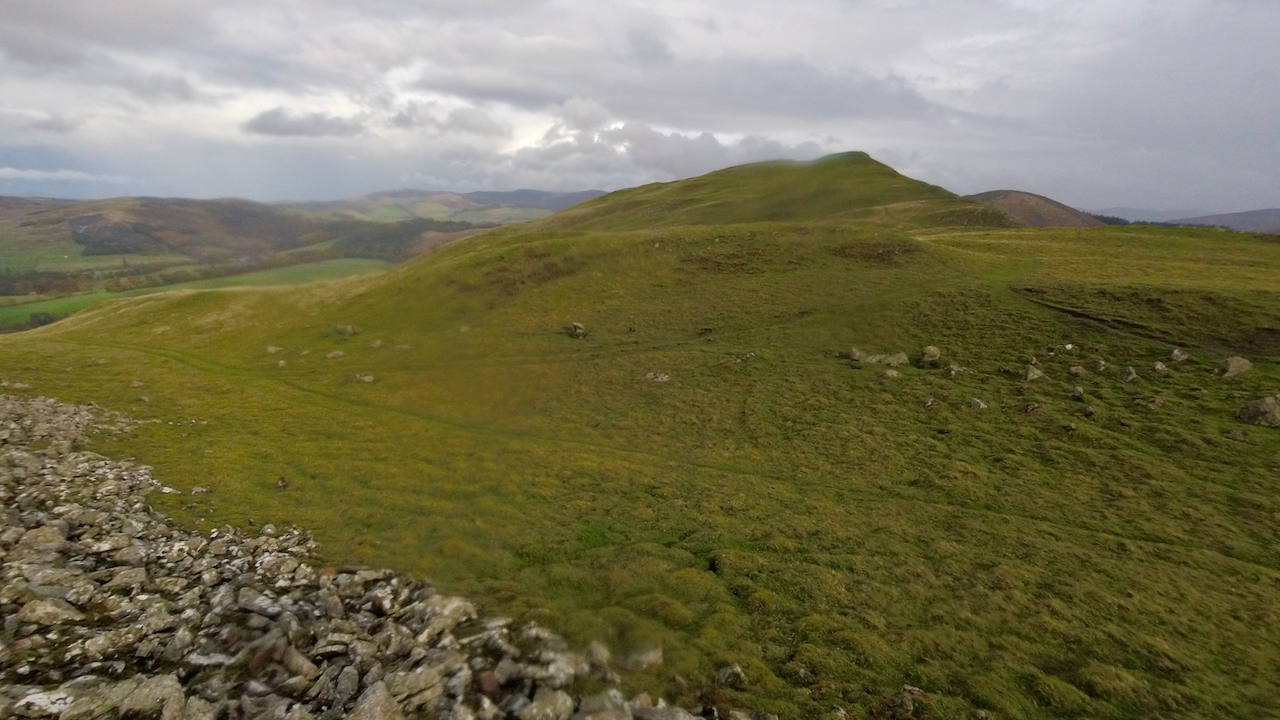
Frisian horses on the Southern Uplands
Cademuir Hill is a small ridge, barely 4km long south of Peebles in the Tweed valley. Yet it hosts 3 prehistoric forts. The photo is taken from the south-westernmost at 356m asl, arbitrarily named by the archaeologists as ‘Cademuir Hill 2’, towards the highest at 407m asl., ‘Cademuir Hill 1’. The 3rd fort, The Whaum,…
-
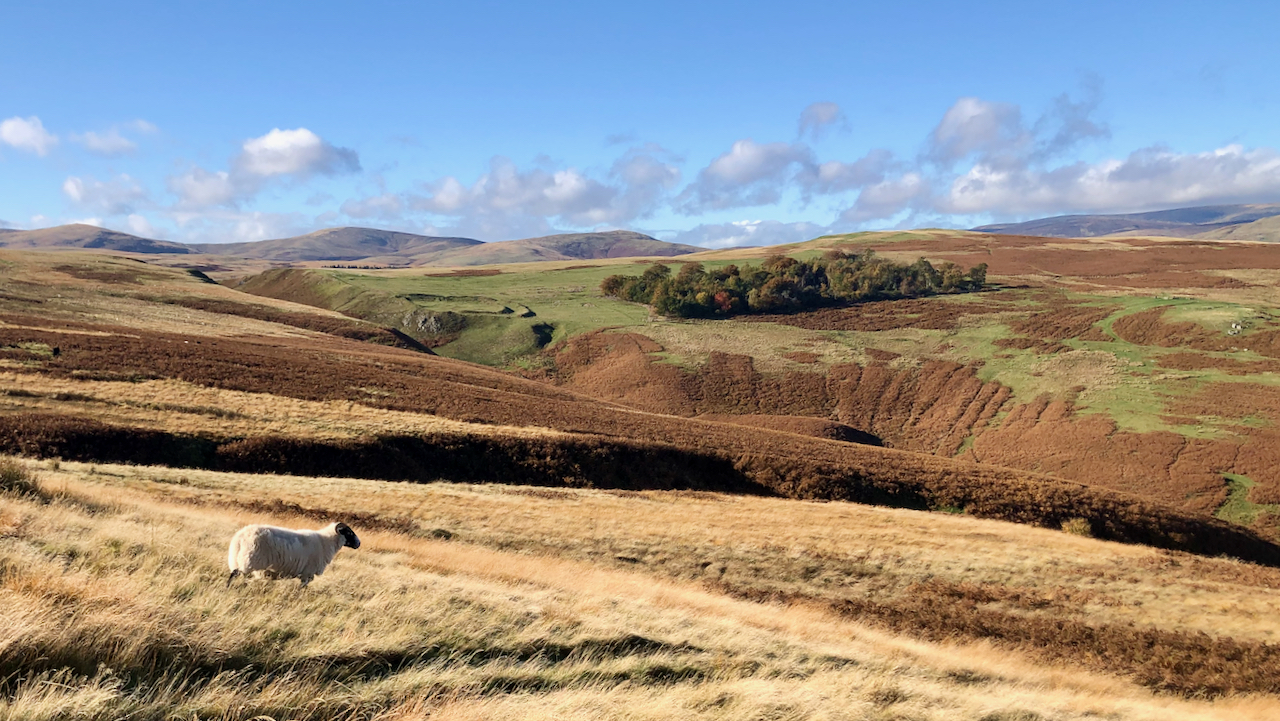
Middledean Camp
Viewed from across the precipitous Middledean Burn, the double earthbanks of the Iron Age fort known as Middledean Camp stands out against the smooth rounded hills of Breamish Valley in the Cheviots. Double earthworks such as this are termed ‘bivallate’. Promontary hillforts are those which are defended by steep slopes on 2 or 3 sides.…
-
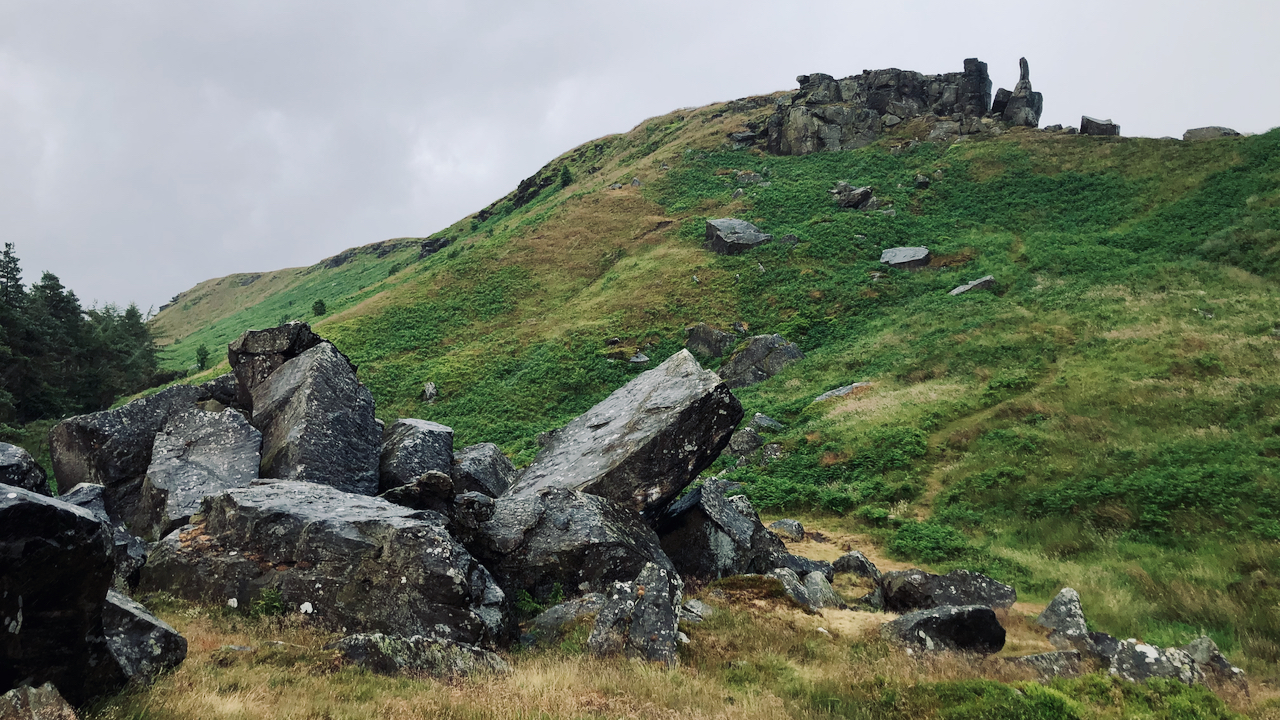
‘The Ancient British Druidical Logan or Rocking Stone‘
A couple of weeks ago I posted about the ‘Immense Landslip’ of 1872 on White Hill. And in that post I quoted from a newspaper article which suggesting paying a visit to ‘The Ancient British Druidical Logan or Rocking Stone‘ when viewing the landslip; ‘only distant a few hundred yards‘. I racked my brain trying to…
-
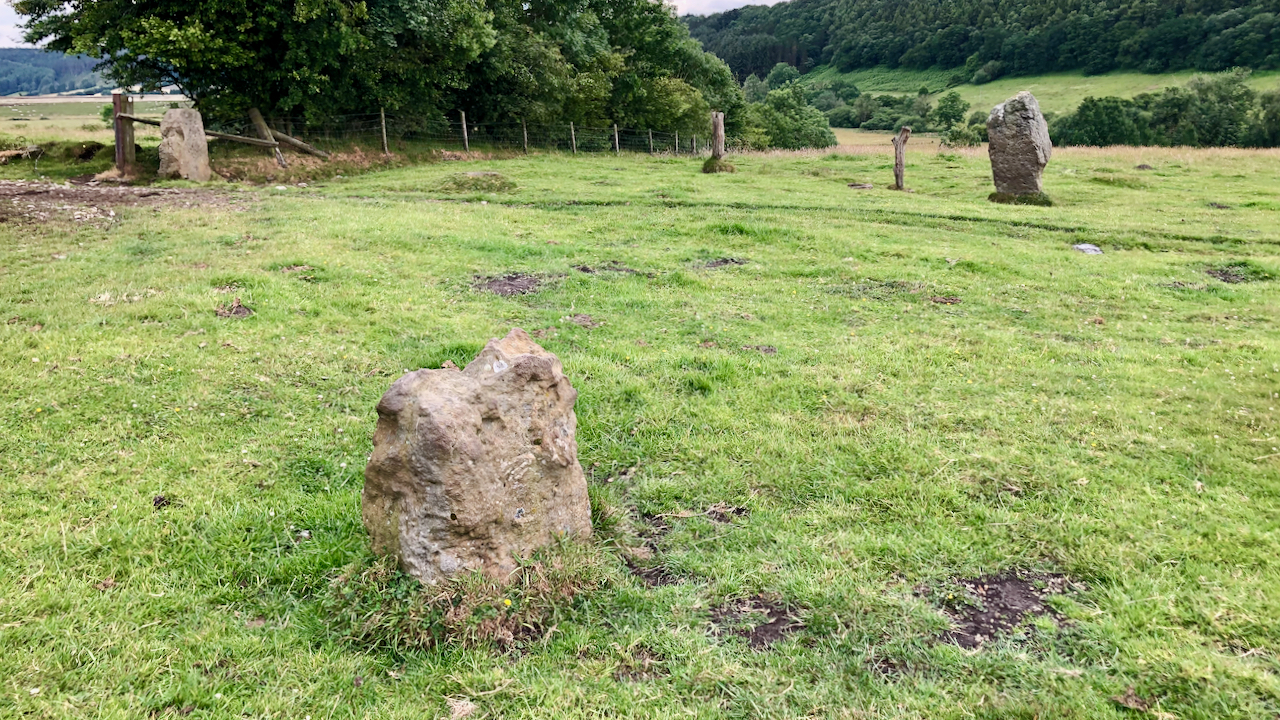
Blakey Topping standing stones
Could this group of standing stones be the remains of a stone circle? Although only three stones are visible in the photo, there is certainly a fourth in an old field bank and one source says a fifth, although I didn’t spot either of these. In addition there are two or three hollows in the…
-
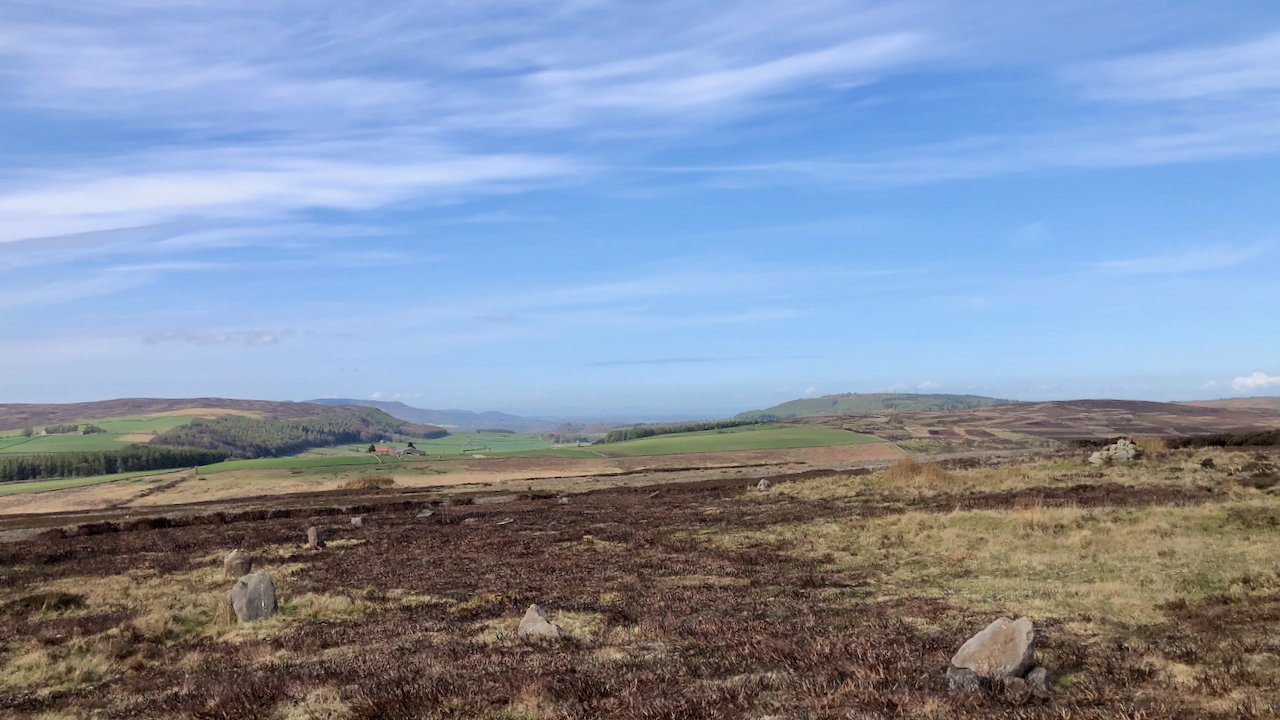
Wayworth Moor
Wisps of cirrus clouds break the endless blue sky. High on the moors the world seems flat. Wayworth Moor has vague boundaries. It’s clear cut to the east, Sleddale Beck, but to the north and west, it probably falls to that part of Commondale Moor, for which Wayworth Farm has pasture rights. A reference in…
-
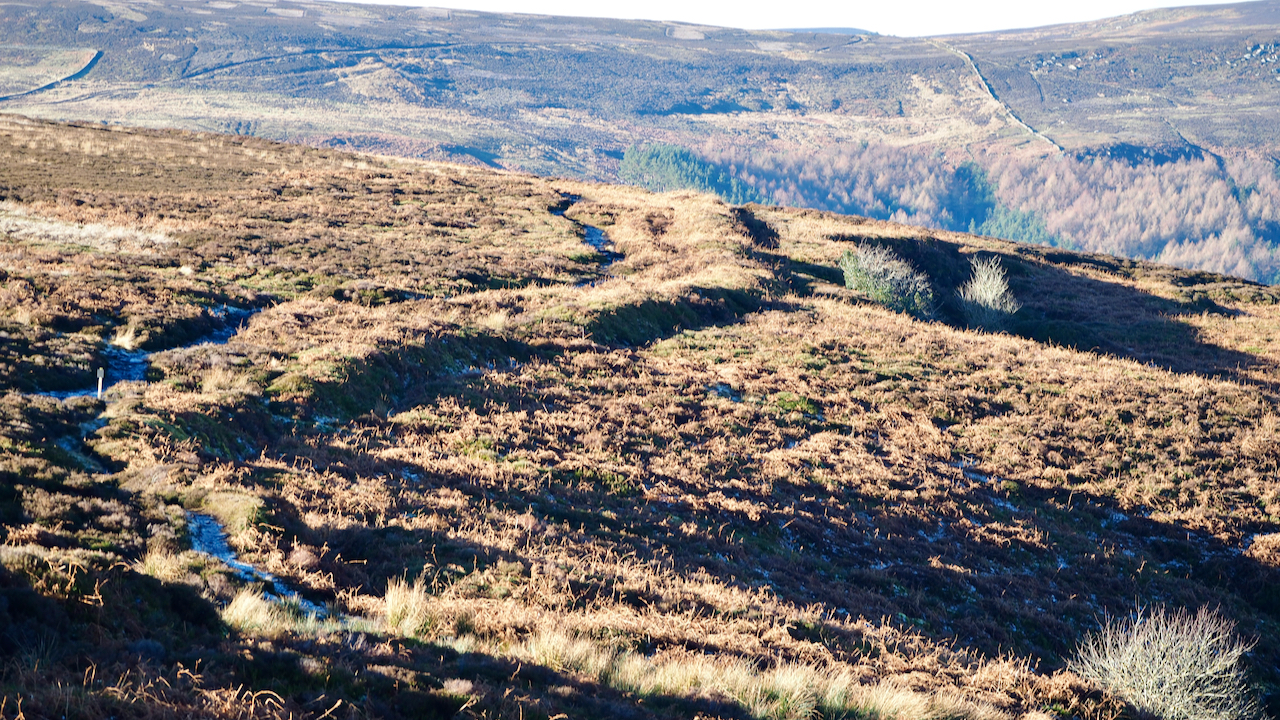
Billy’s Dyke
So named after William the Conqueror, who was supposed to have passed this way in his harrying of the north. Here he met with a storm and cursed in its face. I’m surprised I haven’t posted about this 4.4km earthwork along the eastern edge of Bilsdale before but it’s not exactly the most photogenic subject. Another…
-
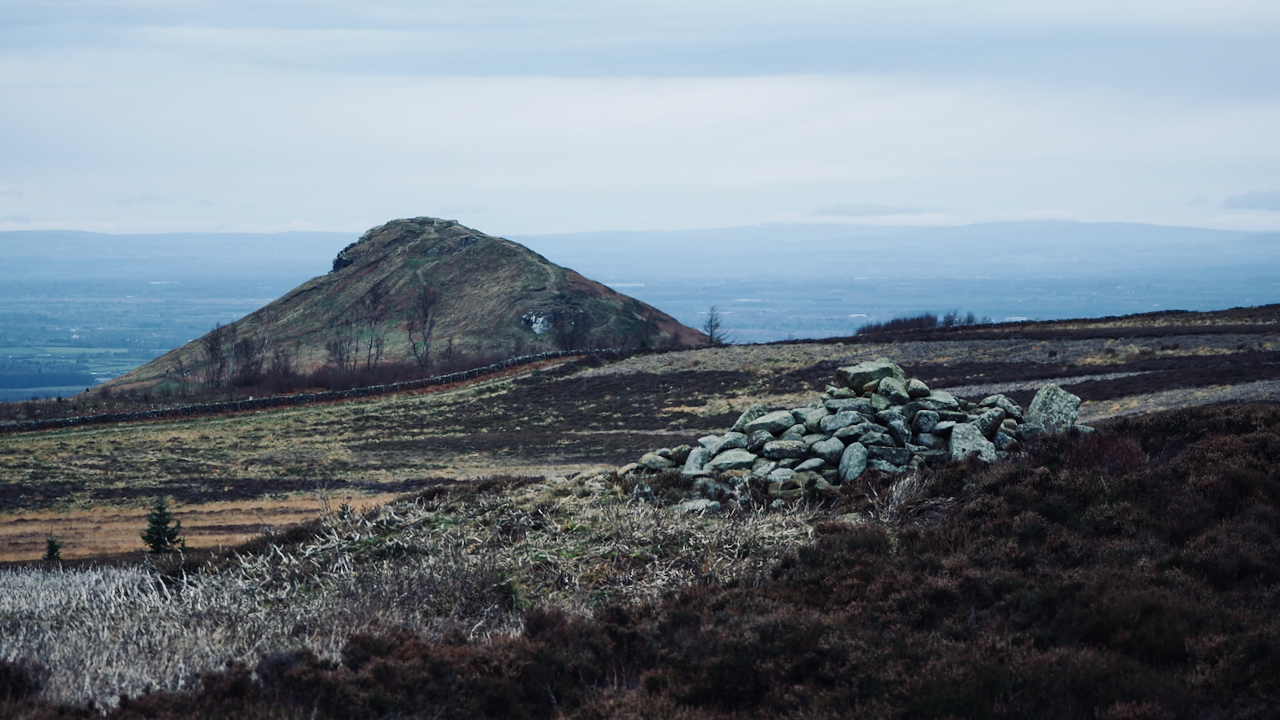
An old favourite — Great Ayton Moor Bronze Age round cairn
I’ve photographed it many times before: — It’s tempting to think of cairns as permanent, but there has been some noticeable movement in this pile of stones since 2007. I saw today the gamekeepers have buried an animal trap in a metal box amongst the stones so this may have contributed. This is a ‘round…
-
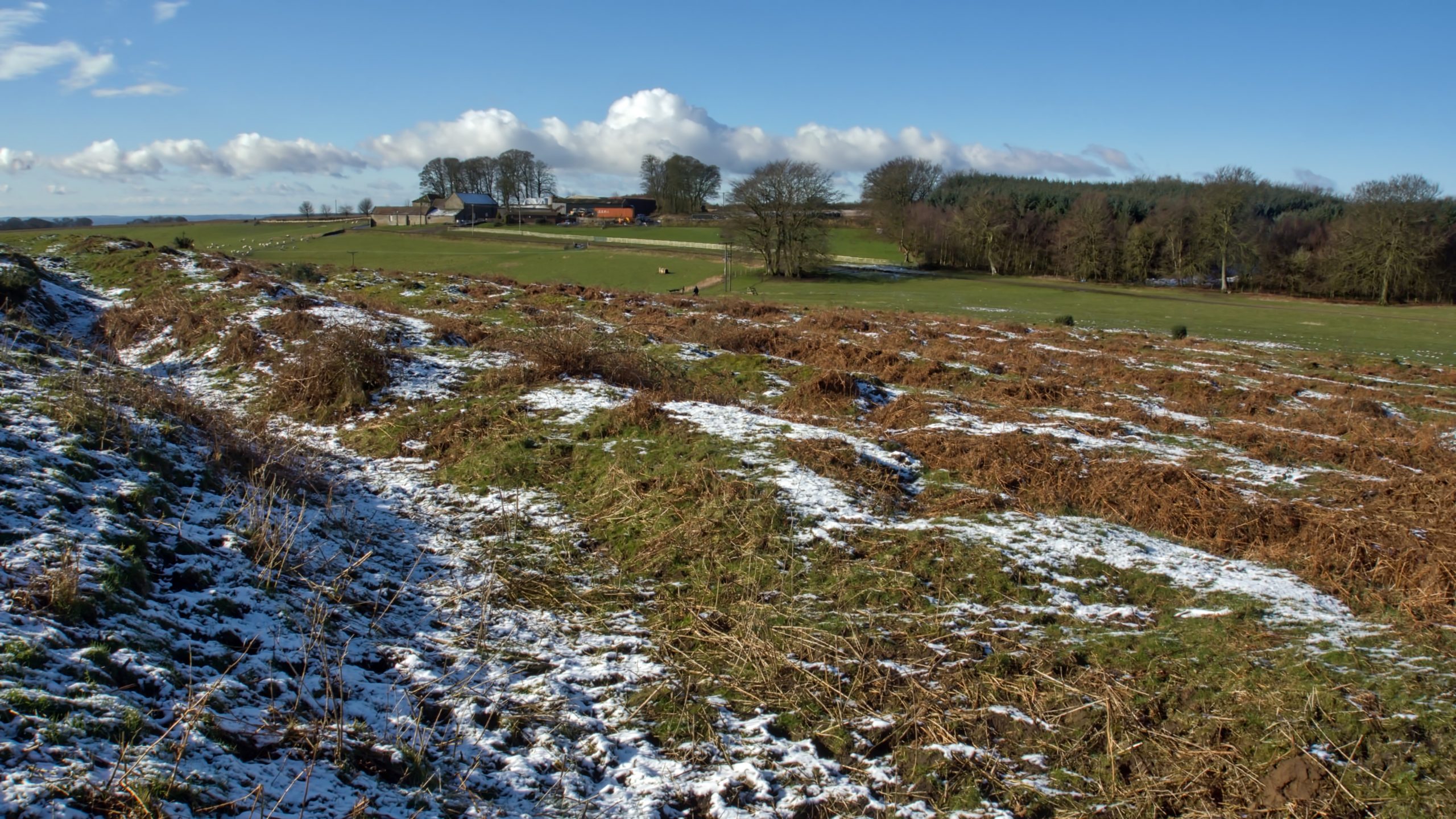
Cockmoor Hall Earthworks
The Tabular Hills have a high concentration of Neolithic or Bronze Age earthworks: linear boundaries in the form of ditches and earthbank and round barrows and at the head of Wy Dale, before Stainton Lane descends steeply into Toutsdale, is an extensive area of a confusing mixture of prehistoric earthworks overlain by medieval. Only a…
-
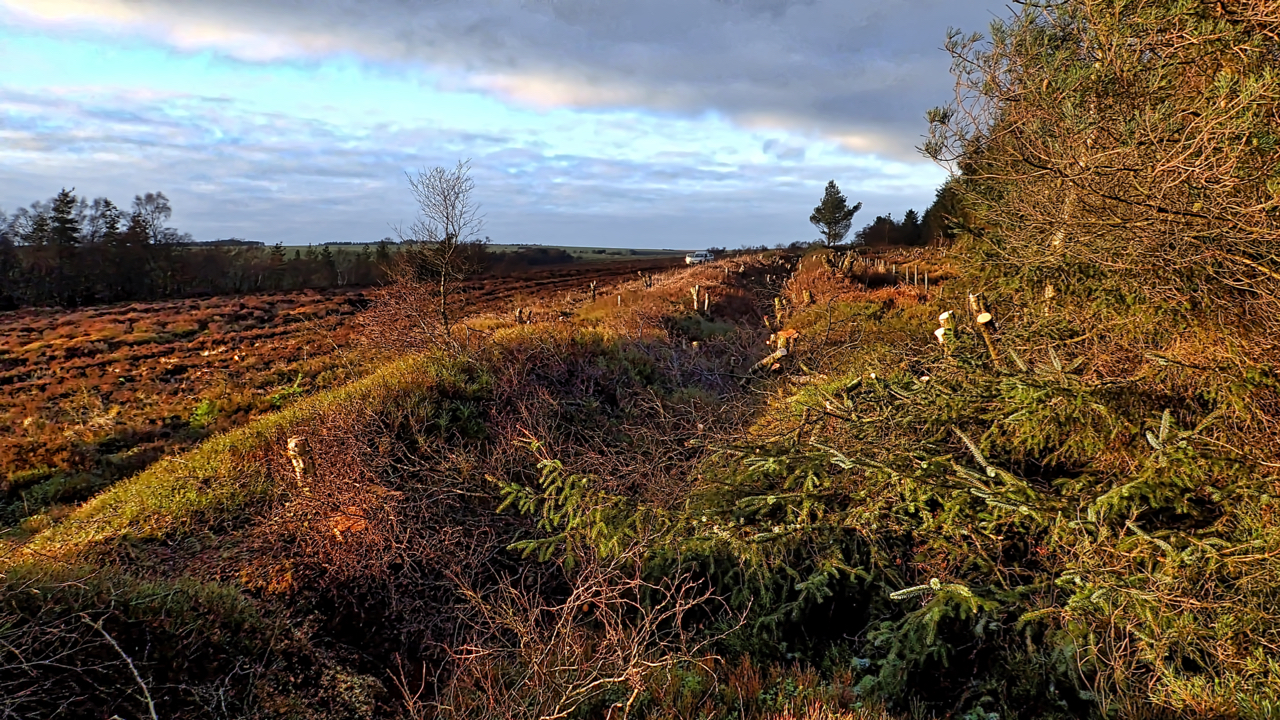
Prehistoric linear boundary, Bridestones Moor
A small section of the 930m long prehistoric earthwork forming the boundary between Bridestones Moor and Dalby Forest. The archaeologists are concerned that encroachment of the forest is causing damage to the ditch and earth banks. So the winter job of clearing the trees is now in its third year, and the end is in…
-
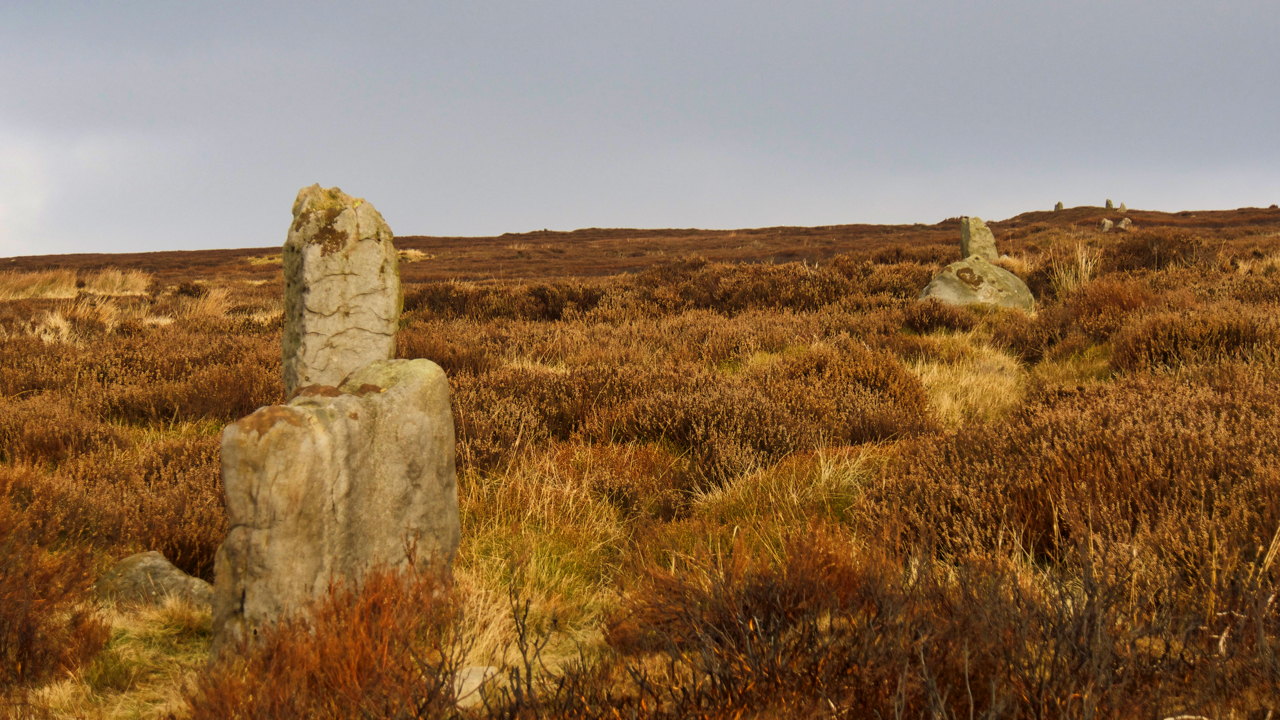
Hob on the Hill cross ridge dyke
The heather moorland between Commondale and Guisborough are among the quietest on the North York Moors yet it is rife with prehistoric remains, round burial barrows, ancient field systems and a cross ridge dyke marked by this alignment of standing stones. The dyke is a Middle Bronze Age earthwork, a little over 400m long and…